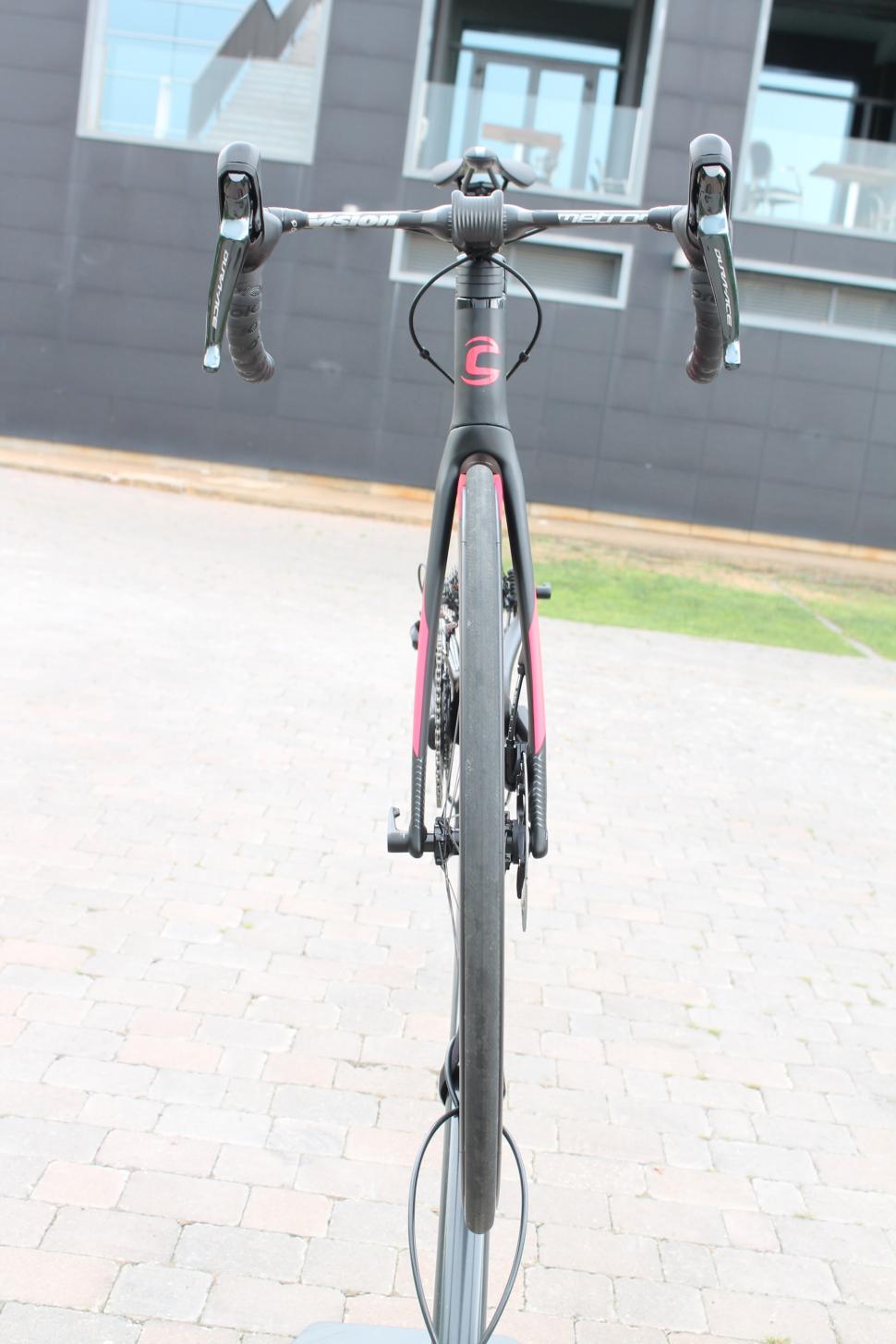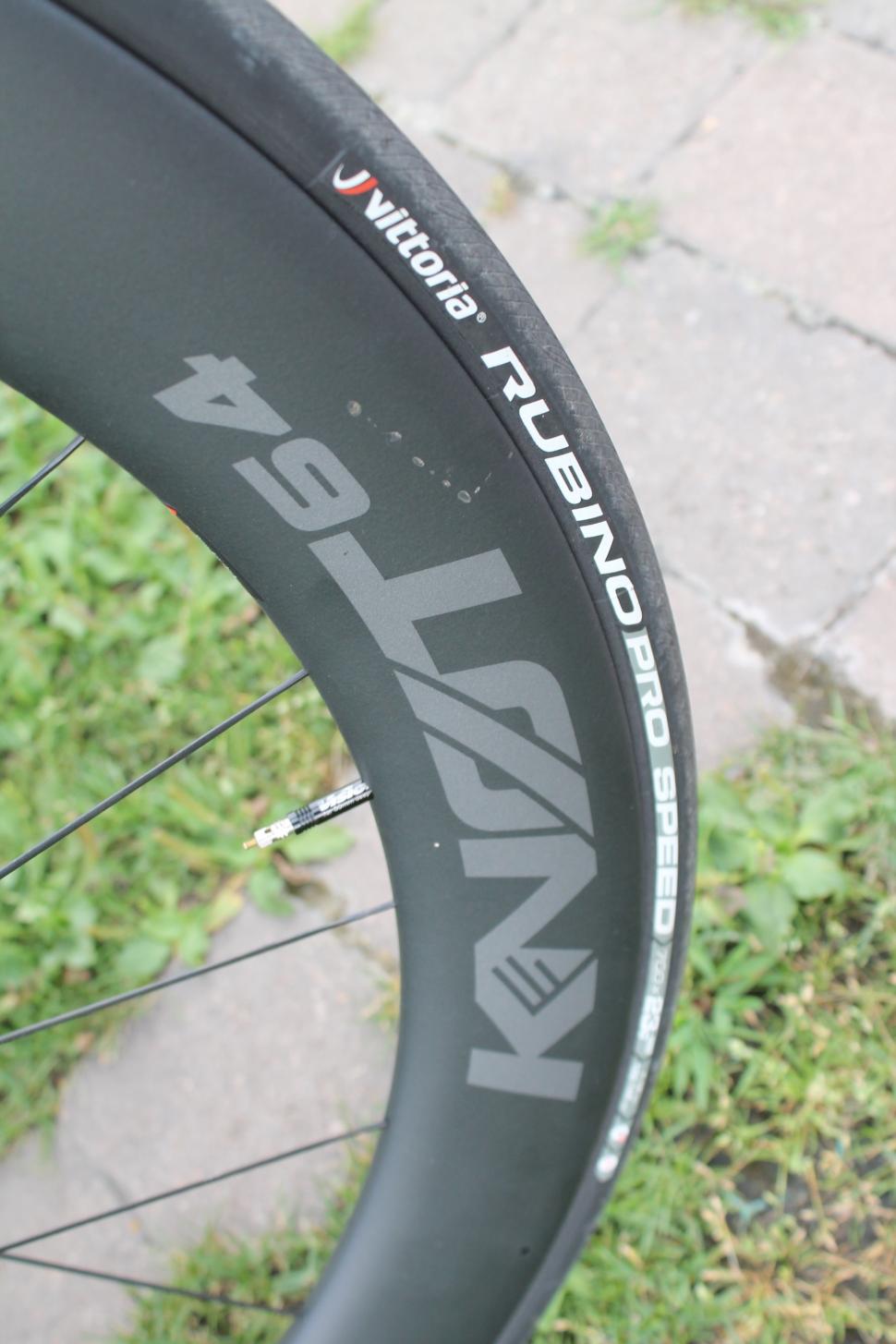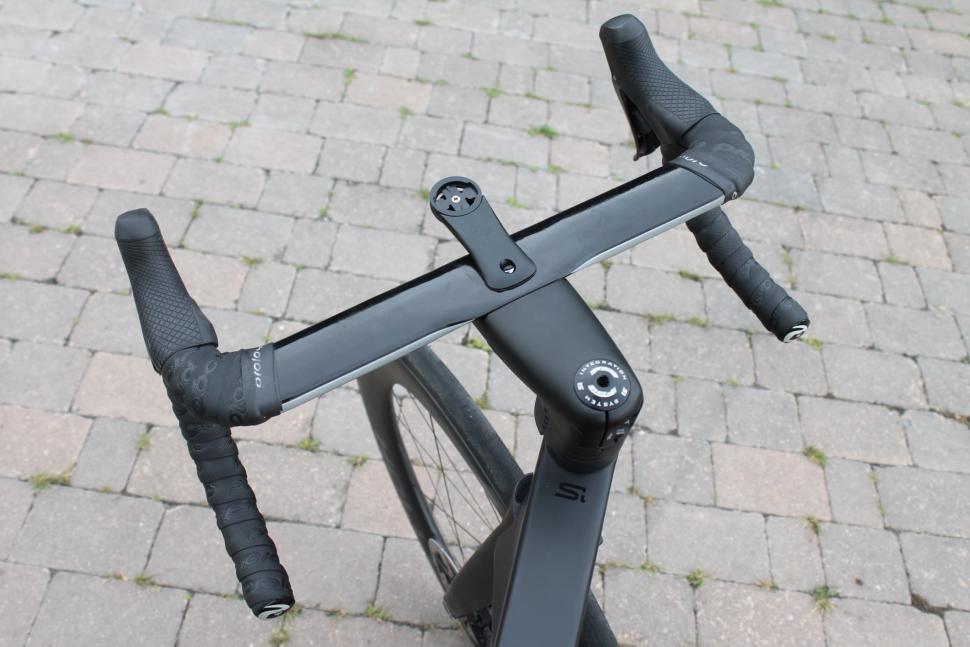- News
- Reviews
- Bikes
- Accessories
- Accessories - misc
- Computer mounts
- Bags
- Bar ends
- Bike bags & cases
- Bottle cages
- Bottles
- Cameras
- Car racks
- Child seats
- Computers
- Glasses
- GPS units
- Helmets
- Lights - front
- Lights - rear
- Lights - sets
- Locks
- Mirrors
- Mudguards
- Racks
- Pumps & CO2 inflators
- Puncture kits
- Reflectives
- Smart watches
- Stands and racks
- Trailers
- Clothing
- Components
- Bar tape & grips
- Bottom brackets
- Brake & gear cables
- Brake & STI levers
- Brake pads & spares
- Brakes
- Cassettes & freewheels
- Chains
- Chainsets & chainrings
- Derailleurs - front
- Derailleurs - rear
- Forks
- Gear levers & shifters
- Groupsets
- Handlebars & extensions
- Headsets
- Hubs
- Inner tubes
- Pedals
- Quick releases & skewers
- Saddles
- Seatposts
- Stems
- Wheels
- Tyres
- Health, fitness and nutrition
- Tools and workshop
- Miscellaneous
- Tubeless valves
- Buyers Guides
- Features
- Forum
- Recommends
- Podcast
TECH NEWS
 cannondale_systemsix_2019_action_-_2.jpg
cannondale_systemsix_2019_action_-_2.jpgCannondale launches SystemSix, “the world’s fastest road bike”
Cannondale has officially revealed the SystemSix which it claims to be the world’s fastest UCI-legal road bike. The US brand says that the new platform, available only with disc brakes, isn’t simply an aero road bike, it’s designed as “a complete speed system”.
Check out our first ride impressions of the Cannondale SystemSix.
What took you so long? That’s the question that many people will be asking. For a few years most major brands have gone for a dual-pronged attack when it comes to high-end road bikes: a lightweight option and an aero option. Cannondale, on the other hand, has had the SuperSix Evo – which is lightweight and boasts aero features – fronting it out alone. That all changes with the introduction of the SystemSix (which carries a name resurrected from the past). There’s a lot to explain here so strap yourself in for some detail.
Is all the "fastest bike in the world" talk hyperbole/marketing BS? Well, a lot of new bikes come along with similar claims so check out Cannondale's claims (below) and see if you're convinced. You can pretty much guarantee that there will be another "fastest bike in the world" along shortly, especially considering that this is the week in which the Tour de France starts and brands love to use the race as a launchpad for their new products.
Aerodynamics
Cannondale argues that the SystemSix, which has been ridden by members of Team EF Education First-Drapac p/b Cannondale for a few months now, isn’t an aero bike because it’s more than that; the label is limiting. There’s certainly a massive focus on aero efficiency here, though.
“The SystemSix is built on a six-part foundation – frame, fork, seatpost, bar, stem and wheels that all work together as a system,” says Cannondale.
“The disc brake-only design freed SystemSix from the constraints imposed by rim brakes, allowing engineers to achieve new levels of drag-reducing integration between the frame, fork and wheels. Precisely truncated airfoil profiles in the frame, fork and seatpost maintain air flow attachment across important yaw angles and minimise drag, while delivering world-class stiffness and ride feel.”
The newest version of Giant’s Propel aero road bike is also a disc brake-only design, an indication of the direction in which the market is shifting – or, at least, an indication of the direction in which the major brands are working.
Cannondale didn’t have the necessary aero expertise in-house so it brought in aerodynamicist Nathan Barry as a design engineer, not surprisingly using CFD (computational fluid dynamics) and wind tunnel testing as development tools for the three-and-a-half year project.
“SystemSix is the result of a ground up design where each element is optimised in pursuit of speed,” said Nathan Barry. “Aerodynamic drag is the single greatest resistive force that riders have to overcome so it is important to everyone, not just racers. SystemSix delivers more speed, to more riders, more of the time.”
As you ride faster, drag increases massively. Reduce resistance and you’ll ride faster, obviously. With that in mind, Cannondale has tailored the airfoil profiles of the various parts of the frame “with differing degrees of truncation designed to maintain flow attachment across important yaw angles to minimise drag”.
It has also introduced what it calls a chine at the base of the head tube “to redirect air flow coming up the back of the fork leg, channelling it downstream”.
The proprietary fork is airfoil profiled too with an integrated crown. It has asymmetric legs for handling the loads imposed by disc brakes and enough clearance for larger tyres.
Wheels
Some models in the range come with Cannondale’s new Knot64 wheelset which licenses a patent from Hed and is designed to work with wide tyres. The 64mm-deep rims have a whopping 32mm outer width. This means that a tyre labelled 700 x 23 will actually measure more like 26mm across (which is the width for which these wheels are optimised, although the bike will take tyres measuring up to 30mm across).
Instead of an ice cream-type profile with the tyre bulging out wider than the rim, this design means that the rim will be the wider component. Cannondale says that this maintains airflow attachment from wider tyres rather than allowing it to disconnect, reducing drag. The wider tyre profile also helps with comfort, rolling resistance and grip.
The wheels are held in place using Mavic’s Speed Release system. One dropout is open, the other is threaded; the axle goes in there, you give it five turns to tighten it and away you go. It’s compatible with standard thru-axle wheels.
The wheels are tubeless compatible although the Vittoria Rubino Pro Speed tyres fitted to all models aren’t.
Handlebar, stem and seatpost
Higher end models feature a Knot SystemBar and stem which, although separate parts, are designed to work together. The bar has truncated airfoil profiled top sections and the cables that run internally. You get 8° of angle adjustment which you wouldn’t get with a one-piece system.
The stem is -17° so it runs parallel with the ground to minimise frontal area. Cables/hoses are hidden inside the stem. That might sound like a mechanic’s nightmare but rather than threading though there’s actually a removable cover that goes over the top of them once you’ve finished any maintenance so it’s a user friendly design. Gated headset spacers allow height adjustment without the need to disconnect brake hoses. The routing goes through a hollow at the front of the head tube.
The proprietary seatpost has a profile that’s designed for aero efficiency too, mimicking that of the seat tube. It’s held in place by a hidden wedge system.
Aero claims
Cannondale claims that the SystemSix produces the least aerodynamic drag of any road bike on the market. Its assertion covers yaw angles from -20°C to 20°C and a speed of 48km/h (30mph). It has developed its own weighted drag system (to take account of the relative importance of various yaw angles) to calculate aerodynamic efficiency that’s based on Nathan Barry’s research as recently presented in the Sports Engineering journal.
In CFD Cannondale calculated using a rider on the bike although it didn’t test with a rider in the wind tunnel, feeling that this would add too much ‘noise’ to the data.
Cannondale reckons that the aerodynamic performance of the SystemSix will benefit you in these ways:
• Riding solo or on the front of a group at 48km/h (30mph), the SystemSix will save you more than 50 watts compared to a lightweight (non-aero) road bike, 13 watts over Specialized’s Venge Vias, 11 watts over the Cervelo S5, and 6 watts over the Trek Madone, its nearest competitor.
• Drafting behind another rider at 48km/h (30mph) saves you 30 watts compared to a lightweight road bike.
• At a speed of 30km/h (18.6mph) on a flat road a traditional road bike requires 140 watts while the SystemSix will save you around 10% power at that speed.
• In a 60km/h sprint over 200m, Cannondale’s notional rider on the SystemSix will save 0.4secs over an identical rider putting out the same power on a SuperSix Evo, finishing 7.2m ahead.
• Pedalling down a 5% gradient at 200 watts will get you to 60.6km/h on the SystemSix. According to Cannondale, you’d need to put out 309 watts on the SuperSix Evo in order to match that speed. That’s a huge difference.
As mentioned, these are all claims from Cannondale.
Cannondale says that even though the SystemSix is heavier than its SuperSix Evo (we weighed the HiMod Ultegra Di2 model in a 58cm frame size, including bottle cages and computer mount, at 7.8kg), its aerodynamic superiority makes it faster on any slope up to about 6% (it’ll depend a little on the rider and the power they’re putting out). The lower the slope and the higher the speed the more the balance tips in favour of the SystemSix.
Even on hilly terrain, you’re not at a massive disadvantage due to the SystemSix’s increased weight over the SuperSix Evo, according to Cannondale’s figures. A 62kg rider putting out 350 watts would get up Alpe d’Huez just 10 seconds faster on the SuperSix Evo while a 75kg rider putting out 300 watts would be 19 seconds quicker on the lighter bike.
Powermeter
Higher end SystemSix bikes will come ready-fitted with chainset spider-based Power2Max powermeters.
On top of the bike’s retail price, you’ll need to pay a onetime payment of $490/€490 to Power2Max in order to activate it. Cannondale expects 70-80% of people to do this because it’s a cost effective way to get a good system.
Other details
A switchplate installed at the top of the down tube houses a Di2 junction box or allows for mechanical cable routing (as shown here).
You also get two different bottle cage position options on that down tube. Cannondale says that the down tube and the seat tube have been shaped to minimise the negative aerodynamic impact of adding water bottles.
The internal cable routing isn’t too complicated at all, although Cannondale has had to introduce a steering stop to prevent the need for anything more convoluted. It’s at 50°. You’re unlikely to notice it in use unless perhaps if you’re trackstanding.
All of the bikes in the range come with reflective elements on the rear facing parts of the frame to improve visibility.
Options
There are five models in the 2019 range which will begin to become available from September, two using Cannondale’s BallisTec carbon and three featuring higher end BallisTec Hi-MOD. They’re all built up with Shimano groupsets.
• SystemSix Hi-MOD Dura-Ace Di2 £8,499.99
Frameset SuperSix BallisTec Hi-MOD Carbon
Groupset Shimano Dura-Ace Di2 hydro disc
Wheelset Cannondale HollowGram Knot64
Chainset Cannondale HollowGram SiSL2 with Power2Max NG Eco Powermeter and Vision rings 52/36
Cockpit Cannondale Knot SystemBar, SystemSix seatpost, Prologo Dimension Nack saddle
• SystemSix Hi-MOD Ultegra Di2 £6,499.99
Frameset SuperSix BallisTec Hi-MOD Carbon
Groupset Shimano Ultegra Di2 hydro disc
Wheelset Cannondale HollowGram Knot64
Chainset Cannondale HollowGram Si with Power2Max NG Eco Powermeter and Vision rings 52/36
Cockpit Cannondale Knot SystemBar, SystemSix seatpost, Prologo Dimension Tirox saddle
• SystemSix Hi-Mod Dura-Ace Women’s £6,499.99
Frameset SuperSix BallisTec Hi-MOD Carbon
Groupset Shimano Dura-Ace hydro disc
Wheelset Cannondale HollowGram Knot64
Chainset Cannondale HollowGram Si with Power2Max NG Eco Powermeter and Vision rings 52/36
Cockpit Vision Metron 4D Flat UD carbon, SystemSix seatpost with Fabric Line Shallow Pro Saddle
• SystemSix Carbon Dura-Ace £4,999.99
Frameset SuperSix BallisTec Carbon
Groupset Shimano Dura-Ace hydro disc
Wheelset Cannondale HollowGram Knot64
Chainset Cannondale HollowGram Si with SpideRing 52/36
Cockpit Vision Metron 4D Flat UD carbon, SystemSix seatpost with Prologo Dimension Tirox saddle
SystemSix Carbon Ultegra £3,499.99
Frameset SuperSix BallisTec Carbon
Groupset Shimano Ultegra hydro disc
Wheelset Fulcrum Racing 400 DB
Chainset Cannondale HollowGram Si with SpideRing 52/36
Cockpit Vision Metron 4D Flat UD carbon, SystemSix seatpost with Prologo Dimension Tirox saddle
Cable routing is external between the handlebar and the down tube on the mechanical shift models. Cannondale says that this adds the equivalent of a watt’s worth of drag at 30km/h (18.6mph).
The four men’s models come in 47, 51, 54, 56, 58, 60, 62cm frame sizes and the women’s model is available in 47, 51 and 54cm.
Get more info, including a white paper, at Cannondale.com/SystemSix.
Mat has been in cycling media since 1996, on titles including BikeRadar, Total Bike, Total Mountain Bike, What Mountain Bike and Mountain Biking UK, and he has been editor of 220 Triathlon and Cycling Plus. Mat has been road.cc technical editor for over a decade, testing bikes, fettling the latest kit, and trying out the most up-to-the-minute clothing. He has won his category in Ironman UK 70.3 and finished on the podium in both marathons he has run. Mat is a Cambridge graduate who did a post-grad in magazine journalism, and he is a winner of the Cycling Media Award for Specialist Online Writer. Now over 50, he's riding road and gravel bikes most days for fun and fitness rather than training for competitions.
Latest Comments
- momove 2 sec ago
Agreed. I've got four of the Elite Jet Biodegradable bottles - not the exact bottle reviewed here - though same shape, size and mouthpiece....
- Dnnnnnn 33 min 57 sec ago
I do wish the reporters would challenge some of the claims made, e.g....
- ktache 2 hours 5 min ago
More https://www.theguardian.com/sport/2025/jan/27/germanys-world-track-cycli...
- matthewn5 2 hours 8 min ago
I've got dynamos running B&M StVZO compliant lights. They are bright, but they have a hard upper cut-off so they don't dazzle. They light up...
- ktache 2 hours 40 min ago
Two of the key features are 18 and Not included...
- chrisonabike 3 hours 48 sec ago
A very different situation I think we can all agree - less violence and generally less of the extreme violence on all sides. Certainly a vastly...
- dubwise 3 hours 25 min ago
Do we really need a rehash of a previous article that is only a few days old? Slow day?
- Johnny Rags 3 hours 26 min ago
Yeah. I was reading some comments made on a radio phone in regarding cyclists wearing hi viz and someone had genuinely phoned in to say something...
- matthewn5 3 hours 38 min ago
I've got a dynamo front wheel built locally by DCR with a Light Bicycle AR36 disc rim. I've got another wheelset built by DCR using Light Bicycle...
















































































Add new comment
10 comments
https://blog.mapmyrun.com/the-curious-case-of-the-cyclists-shaved-legs/
7% reduction in drag or 15watts extra power.
Aye - i'd seen the Specialized results (which I think are actually the same run as this ?) - and the one they did for beards - I think my point was more to get the poster to consider generality and the difference in the tested/simulated results. I'm not waving a flag for the magazine article, far from it, just saying that if we look at one datum they found they we could also consider another.
- I think my point was more to get the poster to consider generality and the difference in the tested/simulated results. I'm not waving a flag for the magazine article, far from it, just saying that if we look at one datum they found they we could also consider another.
If you accumulate all the claims of x% stiffer, y% more aerodynamic, z% lighter with each new model you would have to conclude that any bike over 15 years old was made from damp spaghetti and bricks.
Ugly powermeter and chainrings, plus £500 to activate.... I'd be looking for a delete option to return to the Cannondale SiSL2 crank which is beautiful
* Beauty is in the eye blah blah.
* € 490 (~£433 if they charge that) is an excellent price for a well respected dual-sided power meter.
* You can get the Si cranks with the non-HiMod models.
Curious as I've been challenged so compared a few rides, typical 6m of climbing per km in this region and I'm actually more than 2km faster. Similar power in the region of 200w.
The biggest gains are on descents, the faster you go the more benefit.
Not sure I understand what the product manager was thinking when specking out the range but having to find £6.5k to buy any di2 bike is crazy. I am not saying they are bad value but the component choice does leave me scratching my head a little.
A lot of people will look at aero bikes and think they are ideally suited to di2, outwardly they can look at a giant propel with di2 for a lot less. There may be good reasons component wise for this but I hear so many peopl justifying purchases based on single points of spec.
my2p
I'm young and love the look and tech behind the new aero bikes - this and it's compatriots eg the madone, vias etc are amazing. I do still like a traditional looking bike though - that stainless steel condor for the commonwealths was gorgeous.
I wonder which day this week the madone disc and new venge vias will be out? The test mules have been around for a while...
I love a good aero bike (I have one) but christ this is hideous!
This design looks very similar to the Argon18 Nitrogen (albeit rim braked), which has been out for 4 yrs. I have one, its a lovely piece of design and is surprisingly comfortable. The geo suits me too, with very reassuring handling.
I bet the Cannondale would superb to ride, given the good press the Supersix has always had.
Personally, I love the look and efficiency of these aero bikes, despite being nearly 45!